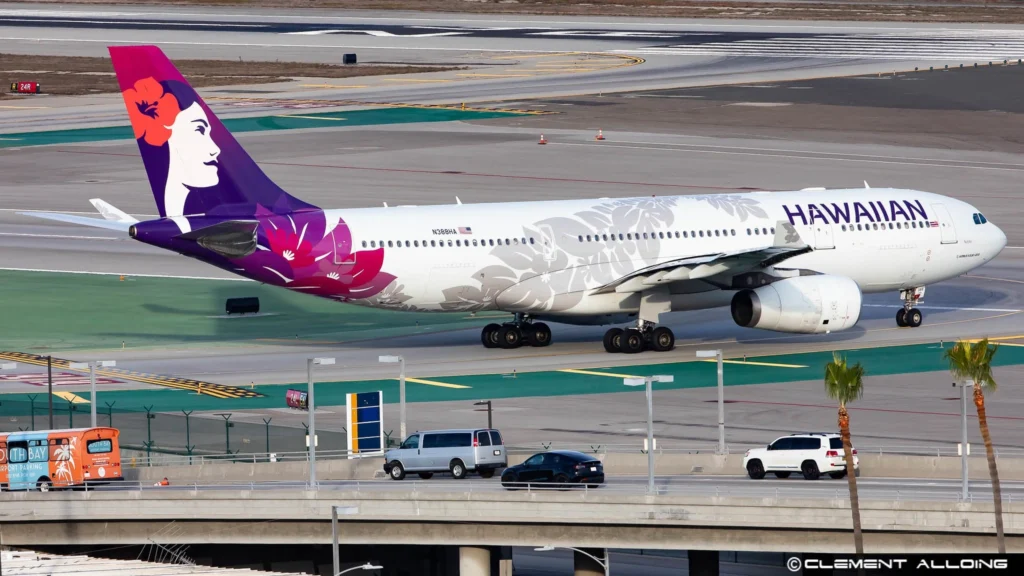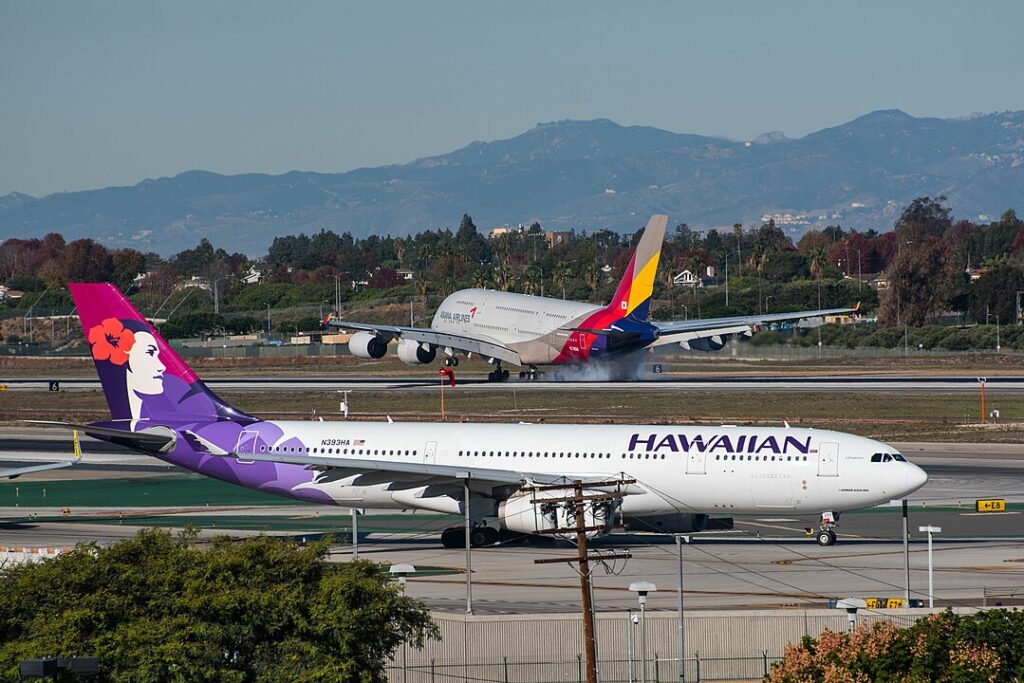TOKYO- A Hawaiian Airlines (HA) Airbus A330-200 encountered an unusual odour in the cockpit shortly after takeoff from Tokyo Haneda Airport (HND) on June 23, 2025. The flight, HA864, was en route to Honolulu (HNL) when the crew halted the climb and opted to return.
The aircraft safely landed back at Haneda (HND) approximately 35 minutes after departure. No injuries were reported, and there was no visible smoke or fire, according to Japanese authorities.

Hawaiian Airlines Flight U-Turn
The incident involved a Hawaiian Airlines A330-200, registered N375HA, operating flight HA864 from Tokyo Haneda (HND) to Honolulu (HNL) with 268 passengers and 13 crew.
Shortly after departure from runway 16L, the crew reported detecting an unusual odour in the cockpit and requested to level off at 6,000 feet.
Prioritizing safety, the flight crew initiated a return to Tokyo. The aircraft landed without further issue on the same runway it had departed from, runway 16L. It then taxied to the apron under its own power, with no external assistance required.
Japan’s Ministry of Transport confirmed that no signs of smoke or fire were observed during the incident. The situation was managed calmly and professionally by the crew, ensuring passenger safety.
Following the unscheduled return, the aircraft remained grounded at Haneda for around 26 hours. Maintenance teams conducted inspections to determine the source of the cockpit odour, though the exact cause remains under investigation.
After thorough checks, the aircraft was cleared for flight and resumed regular operations the following day.

Similar Incident
A Hawaiian Airlines (HA) flight from Honolulu (HNL) to Tokyo Haneda (HND) declared an emergency after a passenger’s mobile phone caught fire mid-flight.
The incident, involving a lithium-ion battery, prompted an urgent landing at Tokyo Haneda Airport (HND), though all 140 passengers remained unharmed.
Flight HA457 was operating at cruising altitude over the Pacific Ocean when the cabin crew detected a strong burning smell. The source was traced to a mobile phone lodged and damaged inside a passenger seat, causing a fire risk due to thermal runaway.
Lithium-Ion Battery Fire Prompts Emergency Protocols
The mid-air emergency unfolded aboard an Airbus A330 aircraft operated by Hawaiian Airlines (HA), now part of the Alaska Airlines Group.
As Flight HA457 cruised toward Japan, passengers began to notice the odor of something burning. Cabin crew quickly located the source—a mobile phone wedged and crushed in a seat.
Flight attendants used a fire containment bag to isolate the device, following standard safety protocols designed for lithium-ion battery fires. These fires can escalate quickly due to “thermal runaway,” a condition where the battery self-heats uncontrollably, posing a serious risk in enclosed environments like aircraft cabins.
Recognizing the potential danger, the flight crew declared an emergency and requested priority landing at Tokyo Haneda (HND). The aircraft landed safely, and no injuries were reported among the approximately 140 passengers and crew.
After the emergency landing, the Airbus A330 remained grounded for over five hours—well beyond a typical turnaround—while maintenance engineers conducted a thorough inspection of the damaged seat and cabin components. The airline confirmed that no significant damage had occurred beyond the affected seat area.
This incident underscores the persistent risks associated with carrying lithium-ion batteries on commercial flights. Despite regulatory measures and passenger warnings, device fires continue to pose a challenge to airline safety operations.
Fires involving lithium-ion batteries remain a growing concern across the aviation industry. Devices such as smartphones, tablets, and laptops have been responsible for multiple in-flight fire incidents globally.
Most modern aircraft are now equipped with fire containment bags, and crews are trained to respond quickly to thermal events.
Stay tuned with us. Further, follow us on social media for the latest updates.
Join us on Telegram Group for the Latest Aviation Updates. Subsequently, follow us on Google News

